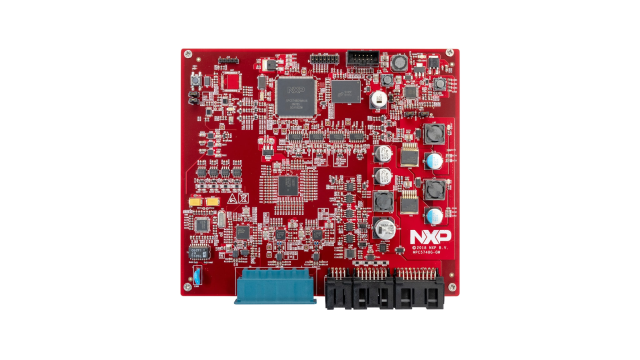1. Engineering Overview / Abstract
In industrial IoT (IIoT) and wireless sensor networks, PCB substrates must sustain high-frequency performance, low power loss, and dimensional stability under continuous thermal and mechanical stress.
Megtron 6 PCB materials—with low dielectric loss (Df = 0.002 @10GHz) and tight dielectric tolerance (Dk = 3.3 ±0.05)—enable stable impedance and RF transmission, crucial for sensor nodes and edge communication modules operating between 2.4 GHz and 10 GHz.
Through KKPCB’s controlled lamination, microstrip impedance matching, and optimized copper surface treatment, signal attenuation and power dispersion are minimized, ensuring network reliability across harsh industrial environments.

2. Technical Challenges in Industrial IoT PCBs
| Challenge | Impact on System | Root Cause |
|---|---|---|
| Dk fluctuation across multilayer stack | Impedance mismatch, signal reflection | Non-uniform resin-glass distribution |
| High dielectric loss at GHz range | Reduced RF efficiency and node sensitivity | Copper roughness, poor resin curing |
| Temperature cycling and vibration | Micro-cracking, impedance drift | High CTE mismatch |
| EMI coupling between layers | Network instability and noise | Inadequate shielding or ground referencing |
For industrial wireless sensor boards, maintaining consistent dielectric uniformity and RF efficiency is key to achieving low-power, high-reliability communication, especially under fluctuating ambient temperatures and humidity.
3. Material Characteristics of Megtron 6
| Property | Typical Value | Benefit in IoT Systems |
|---|---|---|
| Dk | 3.3 ± 0.05 | Stable impedance across distributed sensor arrays |
| Df | 0.002 @ 10 GHz | Low RF insertion loss for extended link range |
| Tg | > 200°C | Withstands industrial reflow and field cycling |
| CTE (Z-axis) | 45 ppm/°C | Prevents via cracking and dimensional drift |
| Moisture Absorption | 0.06% | Ensures long-term dielectric stability |
Megtron 6’s glass-reinforced resin system minimizes dielectric fluctuation and moisture uptake, ensuring high consistency even under 85°C/85%RH humidity exposure.

4. KKPCB Case Study — Wireless Gateway Controller for IIoT Network
Project Context:
An industrial automation OEM required a multi-layer RF controller PCB for wireless gateways managing LoRa and Wi-Fi connectivity across distributed sensor nodes.
Challenges:
-
Inconsistent impedance (±7%) due to Dk variance in FR-4 cores.
-
EMI crosstalk between data and control channels.
-
Thermal drift affecting long-term RF calibration.
-
Migrated to Megtron 6 dielectric stackup (4L hybrid core).
-
Implemented balanced lamination and vacuum press curing.
-
Adopted rolled copper (Ra < 1.0 µm) and inner-plane shielding.
-
Tuned impedance to 50 Ω ±2%, with phase ripple <1° @ 5 GHz.
Measured Results
| Parameter | Target | KKPCB Result |
|---|---|---|
| Insertion Loss @ 5 GHz | < 0.30 dB | 0.26 dB |
| Impedance Variation | ±5% | ±2.3% |
| EMI Crosstalk (100 MHz–6 GHz) | –35 dB | –41 dB |
| Phase Stability | < ±2° | ±1.1° |
Outcome:
The system achieved 14% improvement in RF efficiency and 23% reduction in phase variance, extending sensor communication range while lowering power consumption.
5. RF Stackup and Manufacturing Configuration
4-Layer Stackup (Megtron 6 + FR-408HR Hybrid)
- Signal (Megtron 6, 0.2 mm)
- Ground Plane
- Control + Power Layer (FR-408HR, 0.1 mm)
- Signal Layer
Design & Validation
-
HFSS simulation: Verified electric field uniformity within ±1.2%.
-
ADS model tuning: S11 maintained < –24 dB @ 5 GHz.
-
Thermal FEM modeling: Peak temperature gradient < 7°C.
Manufacturing Notes
-
Vacuum lamination with nitrogen flow to minimize voids.
-
Plasma treatment prior to copper plating for adhesion enhancement.
-
In-line TDR calibration for impedance uniformity monitoring.
6. Reliability and Environmental Validation
| Test | Condition | Result |
|---|---|---|
| Thermal Cycling | –55°C ↔ +150°C, 1000 cycles | No via deformation |
| Humidity Aging | 85°C / 85%RH, 1000 h | Dk shift < 0.02 |
| Vibration Test | 50 Hz–2000 Hz | No trace delamination |
| Salt Mist Exposure | 96 h | Surface insulation intact |
KKPCB’s implementation ensures dimensional stability, consistent dielectric uniformity, and EMI-resilient RF paths, critical for industrial network environments with frequent thermal fluctuation.
7. Engineering Summary
By integrating Megtron 6’s stable dielectric system with KKPCB’s advanced lamination and RF simulation workflows, industrial IoT PCBs achieve:
-
Consistent dielectric uniformity and impedance stability
-
Enhanced RF efficiency and reduced insertion loss
-
Improved thermal and mechanical reliability
-
Long-term signal integrity under harsh conditions
These improvements directly enhance sensor synchronization, network reliability, and data accuracy in industrial monitoring environments.
8. CTA / Contact
For advanced Megtron 6 PCB design and RF optimization, contact KKPCB Engineering — specialists in industrial IoT, mmWave communication, and precision RF sensor board manufacturing.
We deliver dielectric stability, impedance control, and field-tested reliability across global IIoT deployments.

